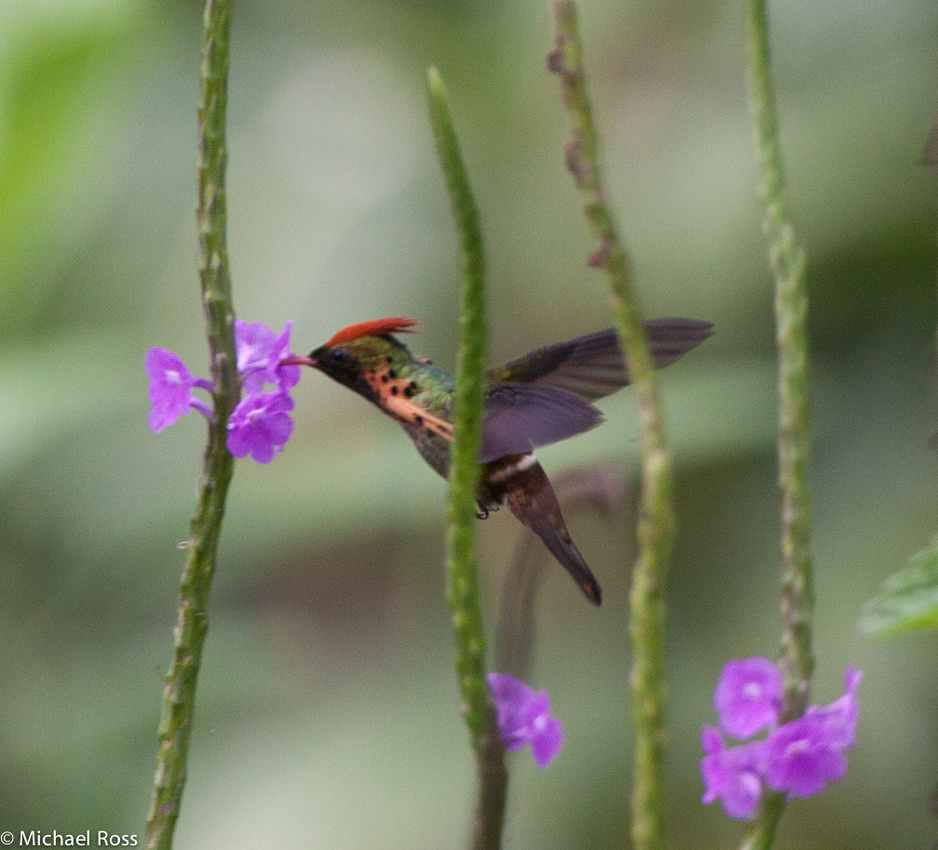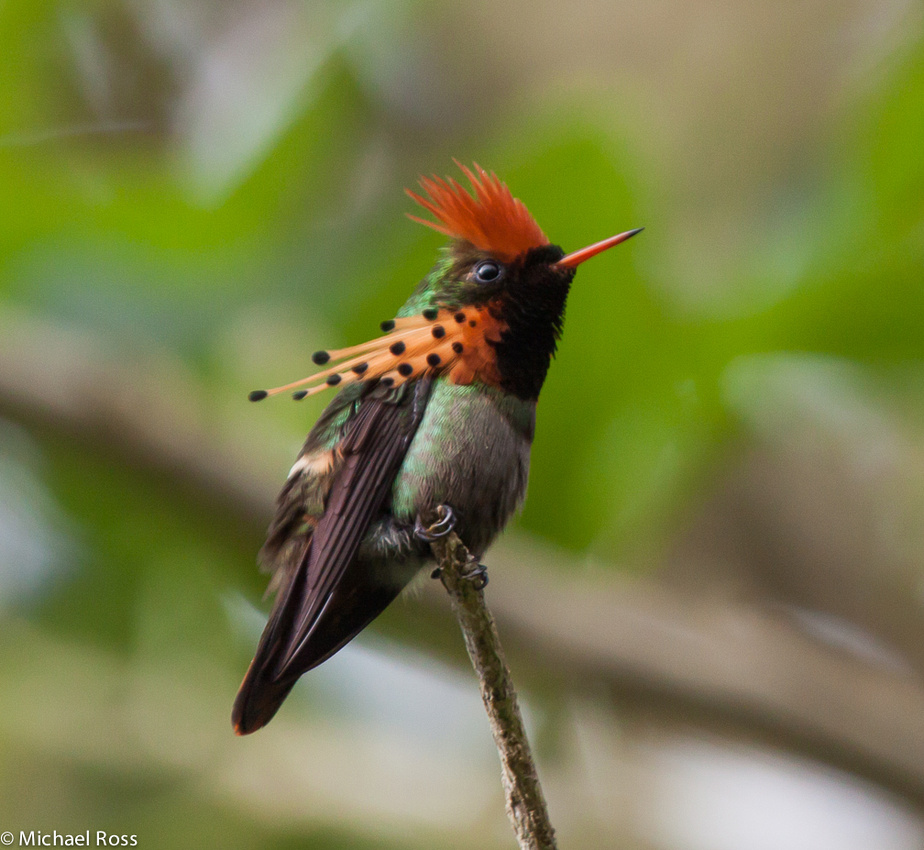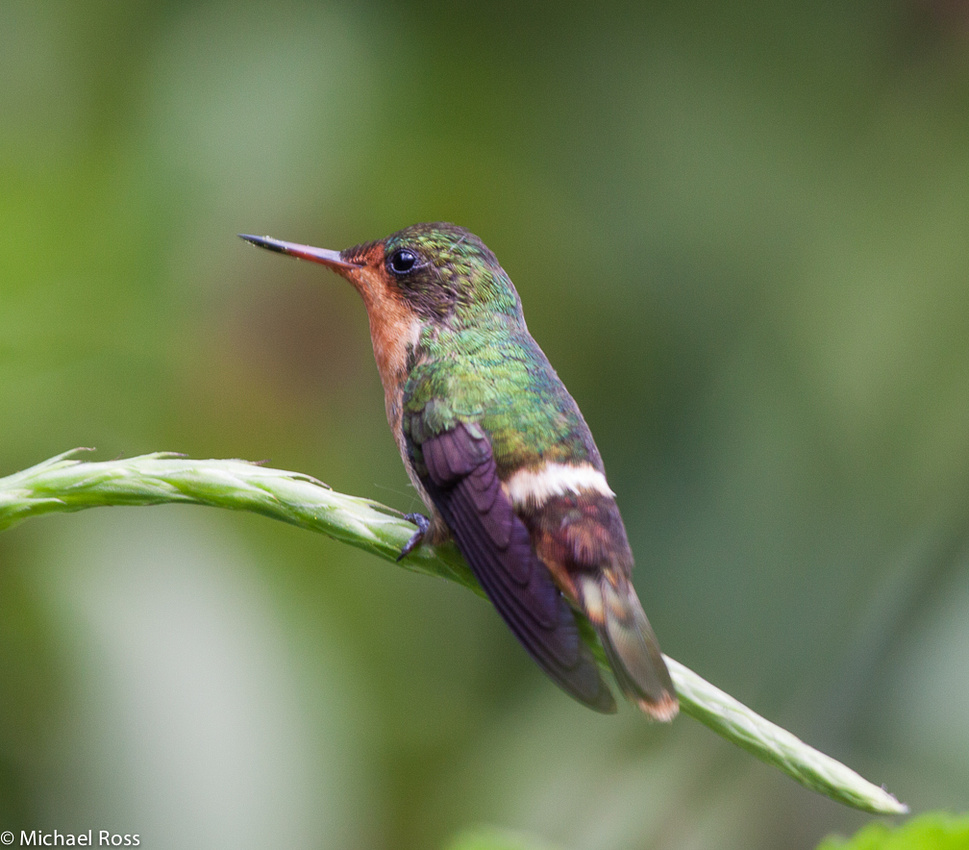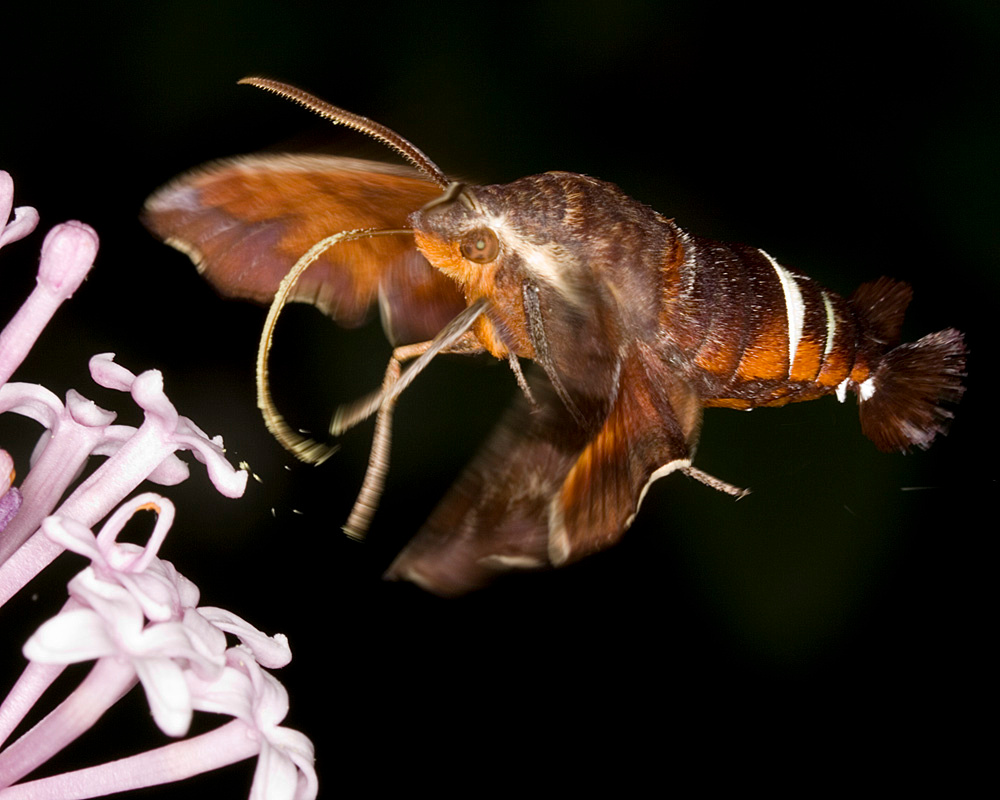Tufted coquette (Trochilidae Lophornis ornata): Trinidad
At the end of January, beginning of February, we visited Trinidad and Tobago for a week. During this time, we spent four days at the Asa Wright nature center in the rain forest area in the mountains of northern Trinidad. Birding was magnificent, with opportunities to see and photograph numerous species at very close quarters. [More photos at the full web site: http://michaelross.zenfolio.com/f270439047].
There were at least eight different species of hummingbirds. Of these, the tufted coquette was by far the smallest (and among the smallest in the world), and in many ways the most beautiful. These gems are approximately 6 to 7 cm long (2.5 inches), and weigh less than between 2 and 3 grams (1/10 of an ounce).
The tufted coquette were almost constantly in motion, moving from one flower to the next, with a strong preference for the verbena that was planted on the grounds. Spending just a few seconds per flower, it was almost impossible to capture them in flight.
The male was significantly more ornate than the female, with its orange crest, orange bill with a black tip, and amazing orange feathers coming out of both sides of the neck. Each of these seemed to have a circular black dot on its end:
 Tufted coquette, male
Tufted coquette, male

 Eventually they would perch for ten to fifteen seconds, and when they did they would generally pick the highest open branch on the bush, eventually returning to the same site (and giving me the opportunity to get a really close look):
Eventually they would perch for ten to fifteen seconds, and when they did they would generally pick the highest open branch on the bush, eventually returning to the same site (and giving me the opportunity to get a really close look):

 In contrast, the female was somewhat plainer, lacking both the crest and featers protruding to the sides of the neck:
In contrast, the female was somewhat plainer, lacking both the crest and featers protruding to the sides of the neck:

 The white band across the back was present in both the male and female, and reminds me of the "hummingbird moths" that we have in New England (and elsewhere), which are almost the same size, and have a very very similar behavior pattern of going from one flower to the next:
The white band across the back was present in both the male and female, and reminds me of the "hummingbird moths" that we have in New England (and elsewhere), which are almost the same size, and have a very very similar behavior pattern of going from one flower to the next:
 Hummingbird moth
Hummingbird moth
Comments
|
January
February
March
April
May
June
July
August
September
October
(2)
November (2)
(1)
December (1)
|
(1)
January (1)
(3)
February (3)
March
April
May
June
July
August
(1)
September (1)
(1)
October (1)
(1)
November (1)
December
|
January
February
March
April
May
June
July
August
September
October
November
December
|
January
February
March
April
May
June
July
August
September
October
November
December
|
January
February
March
April
May
June
July
August
September
October
November
December
|
January
February
March
April
May
June
July
August
September
October
November
December
|
January
February
March
April
May
June
July
August
September
October
November
December
|
January
February
March
April
May
June
July
August
September
October
November
December
|
January
February
March
April
May
June
July
August
September
October
November
December
|
January
February
March
April
May
June
July
August
September
October
November
December
|
January
February
March
April
May
June
July
August
September
October
November
December
|
January
February
March
April
May
June
July
August
September
October
November
December
|
January
February
March
April
May
June
July
August
September
October
November
December
|